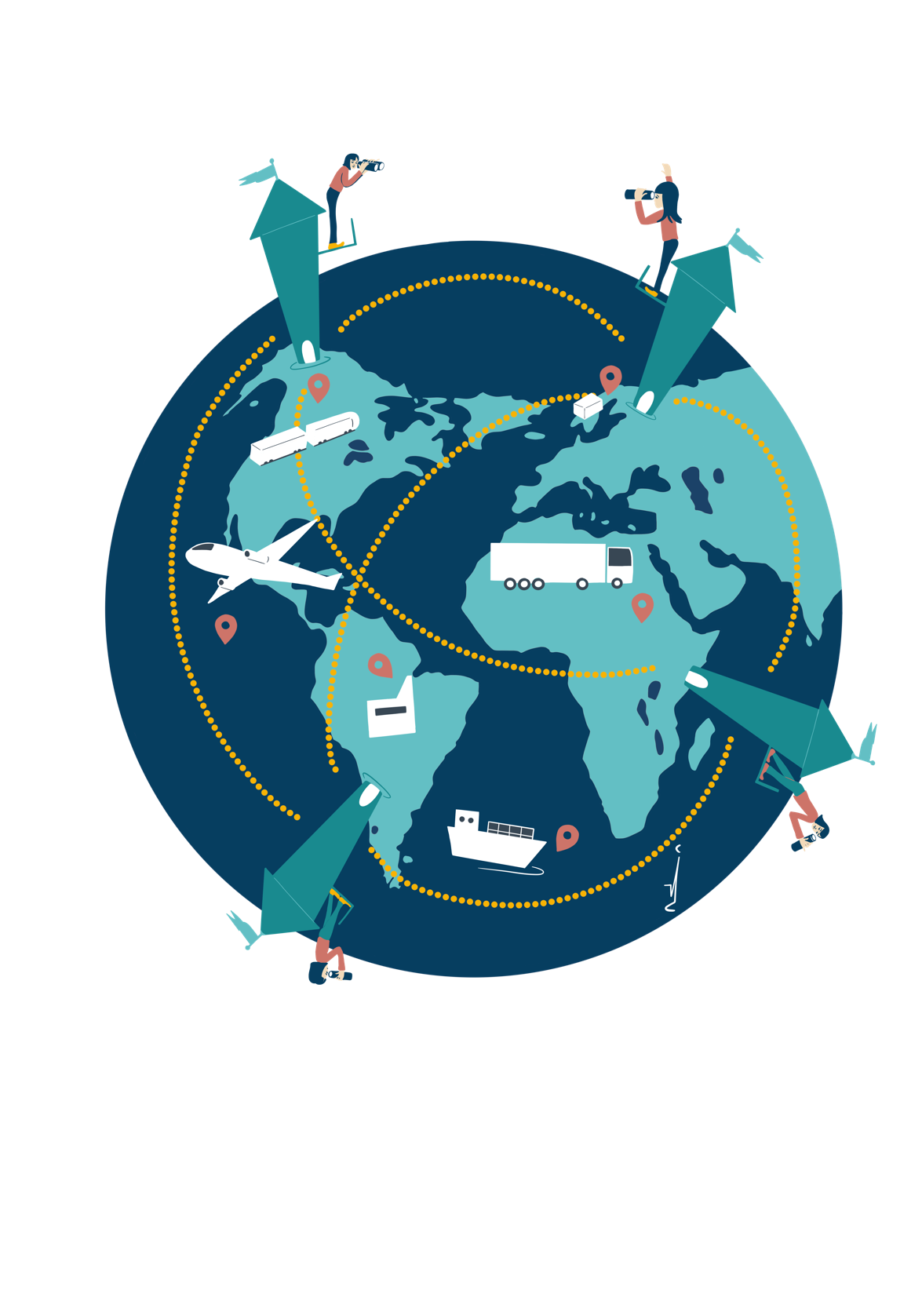Cargo owners and transport buyers seek enhanced visibility and forecasts on factors that negatively impact the times of goods arrival at various locations in the global end-to-end supply chain network. Logistics service providers (LSPs) wish to be able to investigate the progress and get informed on disruptions that could affect the cargo in their custody. The vast amount of data that now are becoming available through diverse data streams offers great opportunity to achieve enhanced situational awareness for the involved parties and the clients of multi-modal transport chains. It is through virtual watch towers that the different parts of the visibility puzzle are pulled together.
A virtual tower is a piece, or a suite, of software used to provide situational awareness. Such situational awareness is focused on detecting disruptions along supply chains based on the analysis of data sets gathered from numerous feeds. The data are continuously analyzed to identify variances to plan, analyze reasons and impact, and propose and prioritize mitigating measures to be executed automatically or to empower people to act upon the recommendations. The virtual watch tower is a digital agent that uses cloud-based intelligence through descriptive, predictive, and prescriptive analytics for enhanced decision making and exception management.
Towers for the transport industry
A first generation of such towers were brought to use in the 1990’s which were limited to logistics operations, and were more reactive than proactive. The second generation were aimed at more operational control and provided near real-time data on fleet locations, inventory levels etc. however suffered from manual processes and information overload. The third generation took the end-to-end logistics and supply chain data into the scope but lacked adequate/uniform infrastructure (technology, connectivity) and prescriptive analytics, and still required manual intervention. The fourth generation brought automation and better analytic capabilities to use. [1]
We use the concept of “watch” tower, rather than “control” tower, to stress the importance of smart decisions-making based on rich data sets constituting situational awareness. Virtual control towers have different scopes, like logistics/transportation control towers, fulfilment control towers, inventory control towers, supply chain assurance control towers and end-to-end (E2E) supply chain control towers.[2] This contribution is mainly about logistics/transportation control towers.
Foundational model for virtual watch towers
At its foundation the virtual watch tower taps into numerous data streams and cleanses as well data. As digitalization allows to detect different instances and calculate multiple outcomes, choke points can be identified in advance, as e.g. congestions occurring at particular transport nodes. Once the digital agent has detected a potential variance to plan, the engine can calculate alternative options which the agent can prioritize. The list triggers action, either executed automatically or by guiding people through alerts and recommendations.
The virtual watch tower is divided into four activity components; aggregate, alert, analyse, and act (figure 1). Within these components, the digital agent would pursue most of the tasks, while humans would rather monitor and execute on the recommended options. The human influence should be limited to validating conformity with the rules, ensuring proper system performance, and factoring in last-minute information.

Figure 1: Fundamental model for the watch tower
The model uses the current transport plan for one actor which could cover a particular piece of a multi-modal chain or the whole chain. The transport plan should capture data about the cargo being transported, the points and timing of departure and destination, and the routes that are planned. This since possible decisions of re-routing and mitigating actions need to take the characteristics of the cargo and the original plan into account.
The watch tower is a continual model of which actions taken in one cycle constitute the new plan for the subsequent cycles. The model also takes new transport assignments into consideration through which it becomes continual. The aggregate-alert-analyse-act is pursued iteratively (figure 2).

Figure 2: Iterations of cycles as foundational for the watch tower
Interacting watch towers providing enhanced situational awareness for all
An opportunity would be to create a network of virtual watch towers exchanging information between each other. One watch tower sits on pieces of data that are a useful for other watch towers and vice versa. Establishing multiple interacting virtual watch towers along the same supply chain would create additional value through access to more data and analytical power (figure 3).

Figure 3: Network of virtual watch towers (Illustration: Sandra Haraldson)
Providing access to data feeds for the ones that are part of the community of data prosumers, as everyone that establishes a virtual watch tower would be both producers and consumers of data.
Concluding words
The aggregate-alert-analyse-act model embedded in a network of watch powers can turbocharge decision-making in supply chain management. It is also the push from reactive to proactive behaviour that is at the core of the virtual watch tower. The network of watch towers forming a network of smart centres can power next generation just-in-time operations or simply allow for better synchronization of flows to optimize on time, space, and resources, and contribute to the reduction of CO2 emissions.
The full article can be found here (https://maritimeinformatics.org/wp-content/uploads/2022/03/Virtual-Watch-Towers-for-Supply-Chain-Visibility.pdf)
- https://maritimeinformatics.org/wp-content/uploads/2022/03/Virtual-Watch-Towers-for-Supply-Chain-Visibility.pdfhttps://blog.roambee.com/supply-chain-technology/the-evolution-of-supply-chain-control-towers ↑
- https://www.ibm.com/topics/control-towers ↑
For more on Maritime Informatics, visit maritimeinformatics.org.









